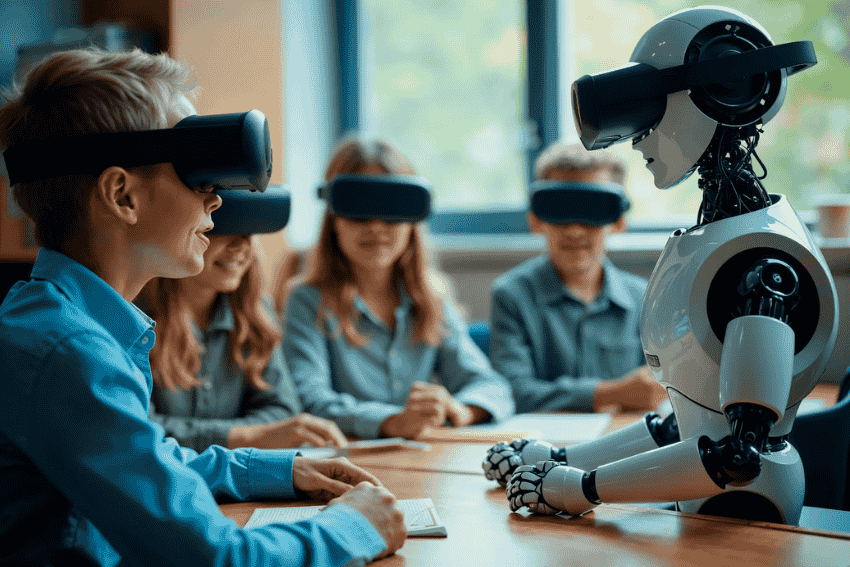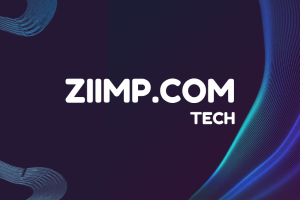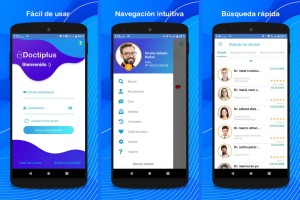AI in the classroom is changing the way teachers teach and students learn, making education more effective and personalized than ever before. Imagine a world where teachers don’t have to waste so much time on paperwork but instead can inspire young minds. That’s what artificial intelligence tools in the educational environment promise. From automating lesson plans to creating personalized assessments, AI exists to make up for the shortcomings of traditional teaching models.

In this article, we’ll explore the underlying mechanisms of these technologies, their benefits, potential disadvantages, and the future. You may be a teacher interested in leveraging AI or a parent interested in understanding its effects, but in either case, you’ll find valuable information here.
Let’s start with the basics. Technology has always gone hand in hand with the evolution of education, such as digital whiteboards. AI in the classroom goes a step further and includes machine learning algorithms to analyze information, anticipate demands, and create content. ChatGPT, along with integrations with Google Classroom and more specialized apps like Century Tech or Duolingo’s AI apps, is taking the lead in this area.
These are not gimmicks, but research that has shown improvements in student outcomes. For example, a study by the OECD shows that AI can increase participation in personalized learning systems by up to 30%.
Why is AI Becoming Important in the Classroom?
The educational environment has never stood still, yet AI is speeding up the evolution rate in ways that no one could have thought of before. The modern schools are managing an increased number of students, different learning activities, and the unending need to deliver quality education. AI is a game-changer that provides solutions that could not exist with traditional approaches.
One of the strongest benefits of AI in the classroom is personalized learning. Adaptive learning platforms have the ability to measure the performance of individual students, pinpoint gaps, as well as recommend custom resources. This guarantees the students the support that they need, not at a level that they cannot follow.
Teachers, on the other hand, benefit from AI-powered automation. Such administrative tasks as grading, scheduling, and lesson planning can be automated, which helps teachers to spend more time teaching something useful. Things like test makers of teachers and exam generators save time but also minimize mistakes while creating an assessment.
In addition, during the era of remote and hybrid learning, AI-driven technology guarantees that quality education is achieved, no matter the physical location. It could be interactive, could be virtual tutoring, or could even be instant assessment with a question answer generator, but in any case, it is AI making the classroom a smarter, more responsive place for both teachers and students alike.
What is the Role of AI in the Classroom?
The role of AI in the classroom is multifaceted. AI is no longer used for just automating a boring task. It is now a matter of changing how students learn and grow.
AI is a Virtual Teacher
It can respond to questions from students, explain, and even check the classroom attendance. With AI, students are also provided with instant guidance, which helps in decreasing the delays in learning that are experienced when the teacher is occupied with an administrative task or even with an individual student.
AI Helps with Adaptive Learning
Examining the data of student performance, AI can make lessons and exercises more or less difficult in real-time so that every learner has to be challenged accordingly without feeling overwhelmed. To illustrate this, when a student has difficulty in understanding algebraic concepts, the system can give the student more practice or easier explanations to make the knowledge easier.
AI Helps with Better Grading and Assessment
Through AI-driven analytics, teachers can see trends in student performance, discover areas where the entire classroom is performing poorly, and change lesson plans accordingly.
AI Enhances Inclusiveness
Learning difficulties or disabilities in students can be supported with the help of AI-powered accessibility tools. This helps in creating an educational process that is more balanced and exciting for all participants. Thus, AI is no longer a luxury item in the classroom. It is becoming a key pillar of modern education.
How AI is Helping Teachers in Lesson Planning
The preparation of lesson plans is one of the most time-consuming parts of teaching. Between the content selection and its relevance to the academic requirements. An educator can spend several hours planning one week of lessons. This process is being transformed by AI, which provides tools that behave like intelligent co-planners. This is how AI in the classroom is transforming the process of lesson planning to be smarter and faster:
Automated Content Recommendations
AI algorithms will be able to search large databases of learning materials and propose the materials that fulfill the goals of the teacher. This may comprise videos, articles, interactive simulations, or practice activities based on the curriculum.
Curriculum Alignment
It is tiring to remain on track with learning standards. AI makes sure that lesson plans are compliant with regional or national standards, which indicate gaps or redundancies automatically. The teachers now have the opportunity to pay attention to the creative aspect of teaching, knowing that the lessons are addressing academic needs.
Question Bank Generation
Making question banks on assignments, or examinations used to take hours. Artificial intelligence (AI) products such as question answer generators are now able to produce a range of questions (either multiple choice, short answer, or essay format) depending on the content of the lesson. This enables teachers to create practice sets or formative assessment rather fast.
Assessment Integration
Assessment can be flawlessly incorporated into the lesson plans with AI. With AI quiz generator or an exam generator, a teacher is able to plan assessments at the appropriate points of time to support the learning goals. This will guarantee the maintenance of balance in which the lessons and assessments will be complementary to each other.
Time-Saving Templates
AI offers pre-created lesson plan templates, worksheets, and quizzes. Not only time saving but these templates also foster creativity because they provide examples of successful classrooms all over the world.
Planning Insights Performance
AI has the capability of analyzing historical student performance to plan lessons. As an example, should some students have difficulties in a certain concept in one term, the system will be able to recommend more practice or alternative explanations.
Using AI in the classroom for lesson planning, educators would be able to free themselves of manual, repetitive work, and instead use the greater focus on strategic teaching and making learning more dynamic and richer.
How AI is Helping in Class Engagement?
Engaging students has always been a challenge, particularly in large or diverse classrooms. AI is changing the game by providing interactive and personalized experiences that capture students’ attention and keep them motivated.
- Gamified Learning: AI-powered tools can convert traditional exercises into interactive games. Students participate in challenges, quizzes, and competitions that make learning fun, while teachers track progress through analytics dashboards. An AI quiz generator can instantly create competitive quizzes that adjust difficulty based on performance, keeping students engaged without feeling frustrated.
- Virtual Assistants: AI-driven chatbots and teaching assistants are available 24/7, answering student questions and providing explanations. These tools help students clarify doubts immediately, preventing learning gaps from widening.
- Real-Time Feedback: AI systems can offer instant feedback on assignments, projects, and in-class exercises. Students no longer have to wait for the next class to know how they perform, creating a more responsive and motivating learning environment.
By integrating AI in the classroom for engagement, learning becomes more interactive, personalized, and adaptive, benefiting both students and teachers.
How is AI revolutionizing the Assessment Creation?
AI has literally revolutionized the assessment creation process. Earlier, teachers used to create each and every question on their own. And the generated assessment used to be the same for all the students regardless of their level of understanding and knowledge. This created a huge gap between those students doing well and those students who are stuck at a former lesson. This is where AI has revolutionized assessment creation for both teachers and students.
The New Assessment Creation Process with The Help of an AI
In most question-answer generator tools, the same process is typically followed.
Analyzing Content
Teachers upload all the necessary learning materials as input in the AI, which could be of any form, including text, files, drawings, images, audio, video, etc. After uploading the NLP and ML, AI understands the detail and the context. And as the best AI assessment creation tools are equipped with NLP (Natural Learning Processing), the output is mostly contextually accurate.
Generating Questions
Now comes the AI’s duty. After the content is uploaded, the tool converts the content into text, then converts it to text-based questions. For example, the best talent assessment tool can help teachers create MCQs, true/false, fill-in-the-blank, short questions, matching, and crosswords from the given learning material. To be more precise, the given material is converted into answerable questions.
Validating the Answers
Not just questions, but these AI tools also provide answer keys. Some tools provide short explanations to support the answers. This is done by understanding the content input by the user, or teachers can incorporate their specific answers as well to support their learning methods. Teachers and students can both validate answers and edit them if required.
Measuring proficiency
Many AI tools offer skill-based assessments that measure the specific skills and abilities of the learners, to help find out the extent of their knowledge and overall talent. Not just that, many AI platforms also allow instant results along with the feedback that helps learners identify their proficiency and performance regarding any concepts.
Maintaining Test Integrity in an AI-powered Classroom
It may sound strange, but AI is not an exception when it comes to bias. AI does have bias. Because the whole assessment, feedback criteria, and answers are coordinated by teachers, and unwillingly, this could cause an unfavorable ground for some students. But Bias is not the only integrity concern in an AI-powered classroom.
AI has simplified the process of generating assessments. However, there are legitimate dangers of cheating, plagiarism, and misuse of AI tools that need to be tackled by schools.
- Proctoring Tools: AI proctoring options can observe students when taking online exams and identify suspicious activity or cheating.
- Detection of plagiarism: AI applications can match student submissions with large databases to detect duplicated or manipulated information and make sure that it is original.
- Balanced Assessment Design: With adaptive and diverse assessment generation through exam generators or AI quiz generators, instructors can minimize the possibility of academic dishonesty.
Test integrity is a matter of finding a balance between innovation and accountability. In the right hands, AI can make things fairer by giving objective and data-driven evaluations.
Challenges And Ethical Concerns of AI in the Classroom
Like other applications of AI in other fields, AI in the classroom also has its fair share of challenges and ethical concerns that must be addressed by the entire education ecosystem.
- Data Privacy: It is one of the major concerns of AI. Sensitive information about students are at stake and it must be handled responsibly to avoid any breaches or misuse.
- Bias in AI Algorithm: Teachers must ensure that the data and content used to train the AI is not biased at all. This may create inequality in assessment and feedback.
- Over-dependence on Technology: AI is not here to replace teachers, but over-reliance is another thing. Excessive reliance on AI could undermine teachers’ professional judgement and human interaction, which is very important in the learning process.
- Accessibility issues: This is another challenge leading to the slow adoption of AI in education. Many learners do not have access to devices and tools to access AI-powered tools, which may lead to potential educational gaps.
Educators must navigate these ethical and logistical concerns to ensure AI is a force for good, rather than a source of unintended harm.
Conclusion
AI is no longer a futuristic concept in education. It’s here and reshaping every aspect of the classroom. From lesson planning to assessment creation, AI-powered tools like question answer generators, AI quiz generators, exam generators, and test makers for teachers are saving time, enhancing learning outcomes, and personalizing education.
Yet, with great power comes great responsibility. Maintaining test integrity, protecting student data, and ensuring fairness remain critical concerns. When implemented thoughtfully, AI does not replace teachers, it empowers them, creating classrooms that are more interactive, efficient, and adaptive.
As we embrace AI in the classroom, the goal is clear: combine human insight with technological efficiency to unlock the full potential of every student.


